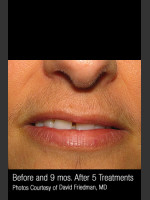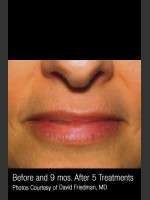The Season For Losing Unwanted Body Hair -Laser Hair Removal

Hair Removal is on the rise and this is the time to start planning for a hair-free summer. Due to the lack of sunlight exposure during wintertime, this season is the safer for procedures that make the skin sensitive to the sun.
Laser Hair Removal
Laser hair removal is the most effective and popular method. Treatment can be performed in-office by a specialist or using an at-home laser kit. In both cases, experts are cautious about the results.
All-natural human functions are astoundingly persistent. Hair growth is especially tricky because it really just wants to protect you. For every follicle you kill, injure or damage, hundreds potentially wait to spring into action.
Estimates vary, but a typical body has 1,000 hair follicles per square inch, though not every follicle has hair at any one time. Some follicles lie dormant until a hormone change coaxes it into production, though most follicles produce tiny peach fuzz hairs that lack pigment.
The Best Candidates
Dr. Larry Samuels, Chief of Dermatology at St. Luke's Hospital explains that "the best candidates for laser hair removal are albinos with dark hair. As your skin and hair color present less contrast, the effectiveness of the laser decreases. This happens because of a formula that adjusts the heat of the laser to target the hair root below the surface without burning the skin above. You can tinker with those adjustments to accommodate for the lack of contrast between hair and skin, but that often makes the laser less effective or perhaps completely ineffective".
Hairs exist randomly beneath the skin at different depths, and if one is even a millimeter below an adjacent hair, the laser might kill one but not the other. Or perhaps none at all if the laser setting isn't powerful enough to target the follicle.
Does it hurt?
Regarding any claims of it being pain-free, Dr. Samuels holds the unpopular opinion that "the more it hurts, the better it's working." That doesn't mean scarring or burns should be evident, and procedures should be intolerable. His office provides numbing creams and methods for cooling and soothing the skin. But the right zap to kill the hair follicle is going to sting a little.
Does it Work?
Dr. Saaida Raza, co-director of the Skin Surgery Center of Missouri in O'Fallon says "everyone responds differently, but reductions are possible. Absolute hairlessness is less common. Even in the best of situations a few stragglers typically remain. For many people, a good outcome is reducing routine maintenance," he adds. If you're not going to be satisfied with that, then maybe you don't want to spend a few hundred to a few thousand on pricey laser treatments that generally include five recommended treatments over a six-month period.
At-home lasers are kits that include a mixed bag of diode lasers, intense pulsed light (not a laser but related) and pulsed heat among other designations. Dr. Raza and Dr. Samuels coincide in that intense pulsed light is generally the most problematic, though machines should be assessed on a case-by-case basis.
In an ideal world, any of the methods can produce results, meaning a long-term decrease in hair growth, but the world is not ideal. "Some are potentially really good products, so I don't know that you couldn't get good results," Dr. Raza says. And because they are designed to be used more often, sometimes daily, you're constantly treating new hairs. Although she warns: Don't believe the wild successes are standard results. Dr. Samuels also points out that the right laser, intensity, time, skin type and expectations are important for the results.
If laser is not the hair removal alternative for you, there are other options but all have their pros and cons.
Hair Removal Options
- Electrolysis targets individual hair follicles: This is a permanent hair removal method that treats a small area per session; hairs can be killed only in the active growth phase. The risk of hyperpigmentation and scarring depends on how your skin tolerates the heat.
- Waxing strips away patches of the hairs from the root: At its best leaves the skin virtually hair-free for three to six weeks. Some people are sensitive to the wax, and ingrown hairs can be a problem.
- Depilatory creams: They are pain-free and can be highly effective, usually containing ingredients to dissolve protein. But some people can?t tolerate the active ingredients, which can result in chemical burns. They can also be time-consuming and messy.
- Plucking/threading/epilators: These are all basic tactics for removing visible hairs. At best they can remove hairs from the root, and if used effectively, a small percentage of permanent reductions can result as follicles fatigue. The disadvantages are skin irritation and pain.


